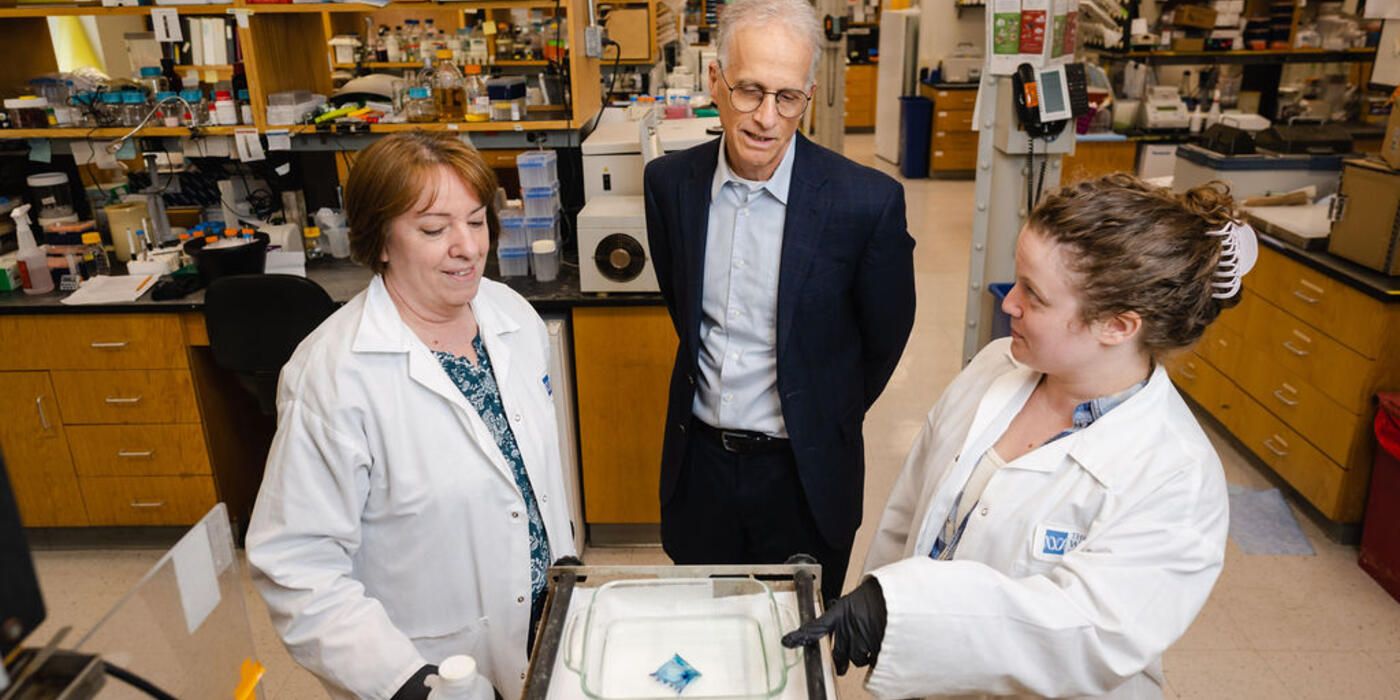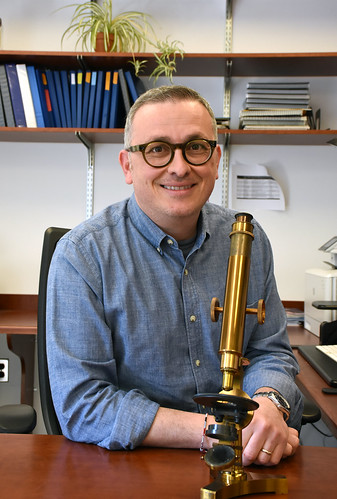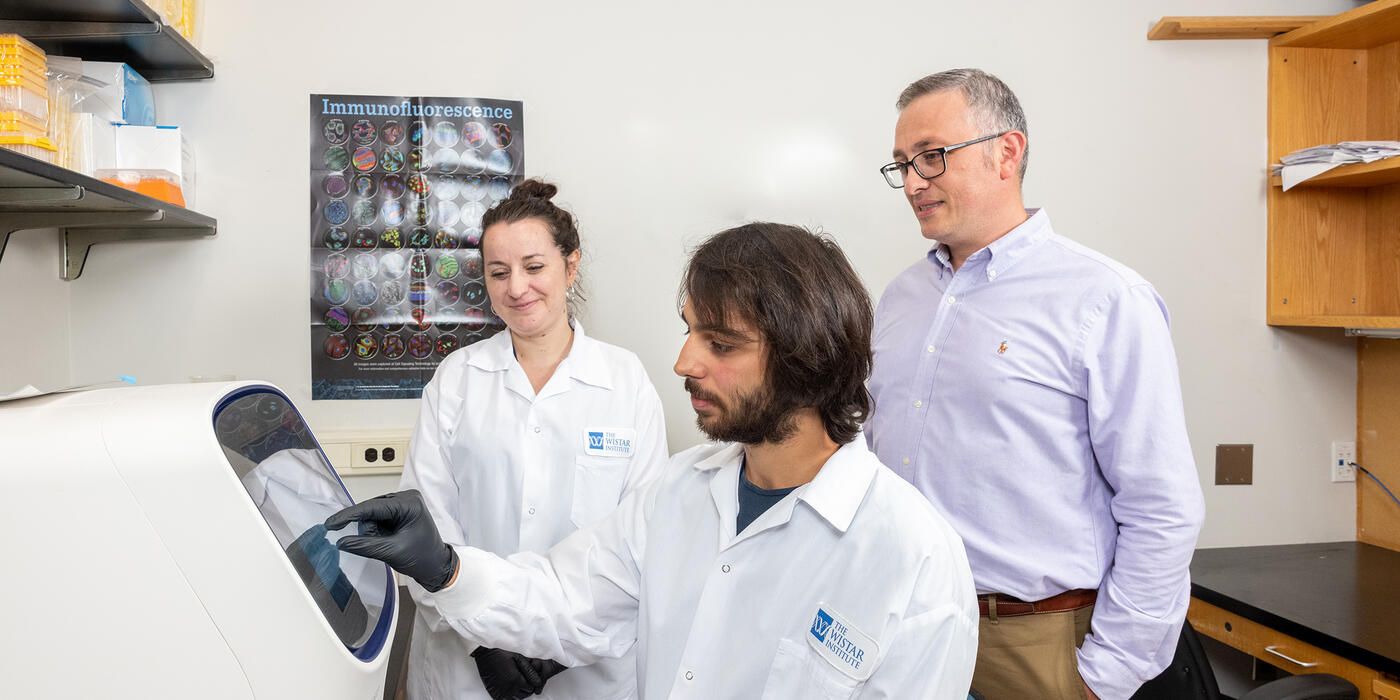Wistar Scientist Coaches Trainees on Importance of Communication
Italo Tempera, Ph.D. — associate professor and associate director for Cancer Research Career Enhancement at The Wistar Institute’s Ellen and Ronald Caplan Cancer Center — hosted a workshop for Wistar postdoctoral trainees on the principles of effective communications as it relates to presenting scientific research and reflected on why it’s a critical skill for up-and-coming scientists.
What made you decide to start this workshop?
Although our postdoctoral trainees get some of the very best scientific training at The Wistar Institute, it would be helpful for them to learn more about being the most effective communicators they can be when talking about their respective research projects.
I want to make sure that Wistar early-career scientists are prepared to advance their careers — and as much as that takes technical, scientific competence, it also requires the ability to communicate effectively. You can be the best scientist in the world, but if nobody understands what you’re saying about your ideas or your data, you’re not going to get very far.
Are scientists not very inclined to talk about their research?
No — quite the opposite. If there’s one thing that a scientist is happy to do, it’s talk about their science; that’s what makes Wistar so great — we’re constantly exchanging ideas with colleagues and discussing our work, which is how you make progress.
The biggest difficulty happens when we make assumptions about our audience: we can rely too heavily on jargon or believe that background on our area of expertise is widely understood (when it often isn’t). We spend years percolating the technical language of our discipline, but it’s important to meet our audience where they are — particularly the younger generations of scientists, who today face the challenge of scientific skepticism.
These budding scientists are already more savvy and well-versed in a variety of media, so it’s a matter of teaching them to distill their work down to the basic, most important & interesting points. I’m originally from Italy and grew up speaking Italian, but I do most of my science in English, so my own test for whether I’m speaking or writing with clarity to a non-expert audience is, “would nonna, my grandmother, understand what I’m saying?” She was a smart person, but not only did she not speak English, she also didn’t receive much education beyond elementary school, which was normal in rural Italy in her days. And yet if I could tell her what I was doing for a living and she could follow, then I knew I succeeded in clearly communicating my science.
Postdocs are preparing to embark on their career search, and a big part of that is presenting their work. How important are communication skills in the interview process?
A good scientific presentation for an interview begins with being able to express oneself and one’s science with confidence. This is vital because it’s how your prospective colleagues evaluate you. Of course, hiring in science depends principally on a researcher’s record: their CV, their publications, funding or funding ideas, recommendations, etc. But in academic science, not only does a successful candidate need to be a great scientist — they need to be a great colleague.
The interview, and especially its presentation component, is your opportunity to communicate your research ideas effectively and in a way that makes future directions or collaborations easily understood. A candidate can be great on paper, but as I tell the postdocs, if their presentation comes across as bland, then they’re less likely to have success.
As a scientist, why do you think it’s important for the public to be able to understand scientists?
As a human being and as a scientist, I look at everything humanity has achieved and find myself amazed. A lot of what amazes me originated in science — that’s something everybody should know, because progress is everyone’s heritage. When people are skeptical of that idea — “why study this?” or “what’s the point of that?” — I think it’s even more important for us to be able to answer those questions and make it clear that scientific inquiry, even at its the most basic level, has made life better for everyone.
Yes, we live in a world of constraints, so scientists compete for limited pots of money (for which effective communication is also essential, by the way). But at the macroscopic level, science is a collective effort. Radio technology wouldn’t be commonplace without having first calculated the physics of waves and electrons — things we can’t see that were theoretical at the time. To me, individual discoveries aren’t what we should celebrate; as important as those are, we should celebrate collective progress. And it’s up to scientists to make sure the public knows why they should care enough to celebrate.
Do you think that reading outside one’s field makes people better communicators?
Oh, absolutely. Even within technical papers, there’s wide variation in prose quality, which just goes to show that improving one’s ability to communicate never ceases to be a necessity. I find that my own writing — even for expert audiences who permit jargon — has improved by reading widely and keeping an active mind; it changes how you think.
I also think it’s good for scientists to push past the comfort level of their discipline. I love fiction because it’s yet another opportunity to learn more about humanity and life. As an Italian immigrant, I can’t tell you how much I learned about America by reading American Pastoral by Philip Roth, for example. But reading widely will expand your toolbox to be a better communicator. To be hopeful about humanity’s future — which I am, emphatically, as an optimist — then we need to understand ourselves and our achievements.








